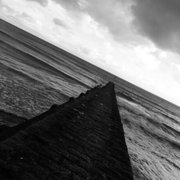Claire S.
Yelp
The size of the project, and an indication as to how busy it gets in high season, is evident from the moment you go through the front gates. Car parks named after fruits greet you together with signs saying how far it is to walk to the centre. Marshals direct you to the nearest spaces. The furthest car parks involve walks in excess of 1 mile. Fear not though ye lazy, a free circular bus will actually take you to the centre (something I was very grateful for being 8 months pregnant!). The busses go from stops outside each of the parking areas. There is limited cover/shade but no seating, something worth bearing in mind if it is very sunny or if you cannot stand for too long. Disabled badge holders have allocated parking right up by the entrance but you do need a blue badge.
There is quite a long walk downhill through outside planted areas to get to the biomes. The plants are all clearly labelled and their uses, be they medicinal, edible or industrial are given. It is here that you get the first true insight into the ethos that is Eden a natural way of life. Due to the natural seasonality of plants there were quit a few areas that looked a little worse for wear spring was over but summer yet to begin. For me, it was a shame that the planting had not been done in a way so as to provide a little more interest year round. I suspect that this was the case so as to allow planting of similar groups together but the visual effect was slightly marred as a result.
For those who are unable to manage the long walk down there is a land train (a tractor pulling carriages) that goes on a circular route down through the outside biome to the covered biomes. Unfortunately much of the outside planting is missed out if you take this route. If you can walk down, do (or borrow a wheelchair) and take the land train on the way back when going uphill.
The main attraction for many will be the covered biomes themselves. There are three climatic areas planted up so as to reflect the biodiversity of the areas that share such a climate. The three areas are tropical, temperate and outside.
The temperate biome, for me, was the best. Packed full of interesting planting together with lots of easy-to-read information about the plants, their uses and their relationship with man. Planting was interesting and a variety of levels, all accessible by wheelchair/pushchair, made for an interesting layout. I was quite surprised that the sensory experience was mainly limited to sight. A few birds in the biome gave some auditory experience but I was surprised at the lack of olfactory experience. Smell is the one sense that I really associate with plants but it seemed strangely lacking her.
There were few places to sit down in the temperate biome although some of the planter walls were being used as resting places. Plants were all within reach and, as a result, some nearer to the pathways were damaged and looked a little worse for wear. As ever, vandals had decided that carving names in cacti was a good idea. The temperature in this biome was comfortable shirtsleeves were all that was required.
The second indoor biome is the tropical zone. The temperature and humidity was instantly noticeable. Initially it did not feel too uncomfortable but that did change quite quickly. Perhaps visiting when pregnant was not a good idea but within about 5 minutes my hands and feet had swollen quite considerably. Water coolers were provided and people were making good use of the ones that were obviously placed. There were, however, coolers that were placed off of the marked pathways and thus not noticeable unless you were looking carefully. We heard several people commenting that they were struggling with the heat and humidity. The route around the biome was clearly marked, as were several shortcuts in case you needed to get out. Interestingly, I did not notice the air-conditioned room that had been pointed out to me on the map.
The planting in this biome was very interesting but I felt that I could not spend as much time looking at the plants and the information as I would have liked. Certain areas of this biome are not accessible to wheelchairs and caution should be exercised throughout as the floors are very wet due to the humidifier sprays. There are some interesting displays of native habitation that would provide some interest for children. The tropical biome is probably the better of the two indoor biomes for children as many of the plants and exhibits are more recognisable in terms of the products that they give us (rubber, chocolate, bananas etc.).
A recent new addition to the site is an area called The Core. Essentially an education centre, The Core is more like an interactive museum. A good resource for children aged about 5 to 12 years old, exhibits show man's interaction with nature, the price of living and the dangers that face the world. It could be depressing, but with some careful adult explanations, food for thought.














































